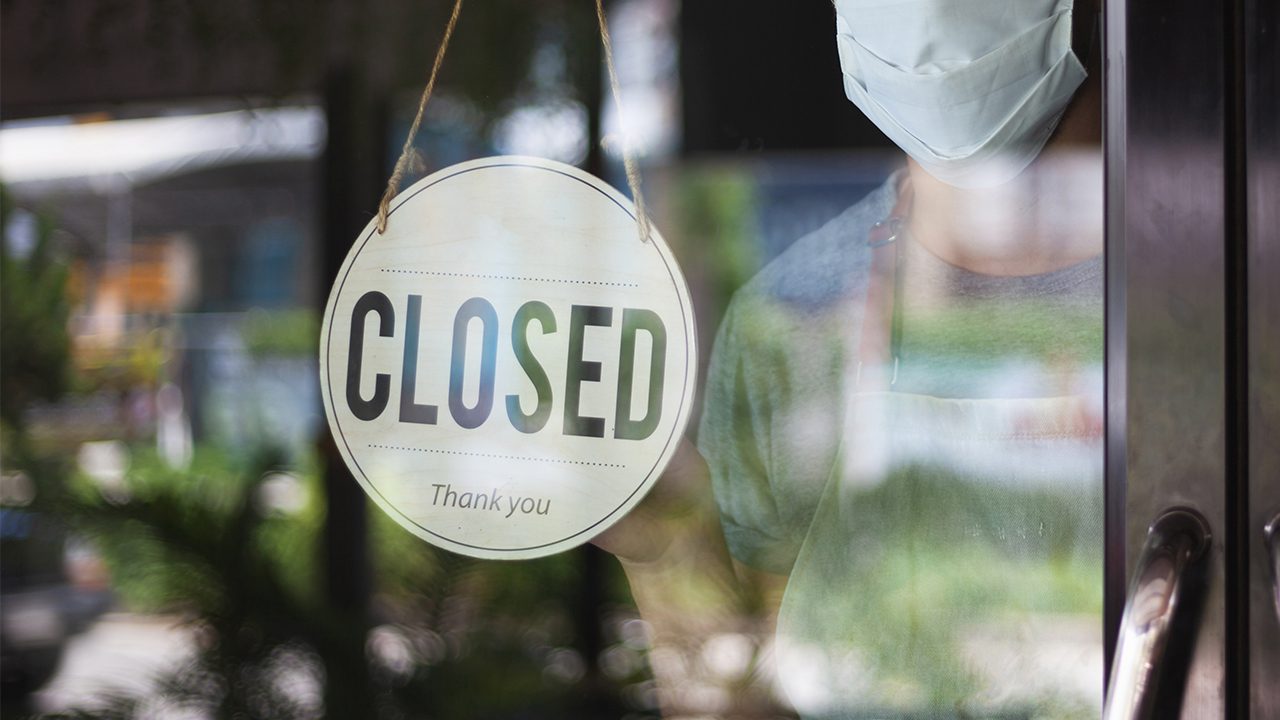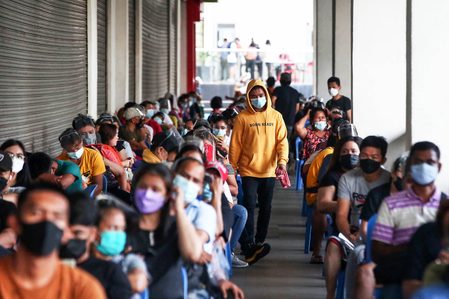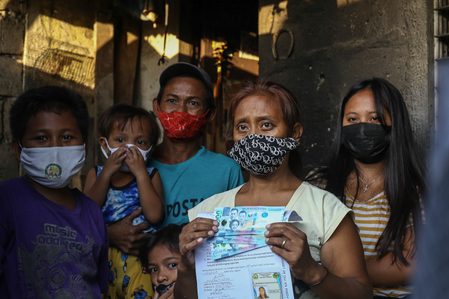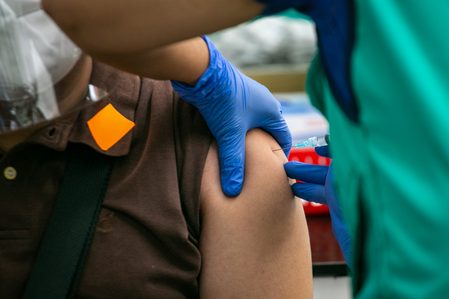SUMMARY
This is AI generated summarization, which may have errors. For context, always refer to the full article.

NCR Plus has been placed under a General Community Quarantine (GCQ) with “heightened and additional restrictions” from July 30 to August 5, which means that starting July 31, restaurants in Metro Manila, Rizal, Bulacan, Cavite, and Laguna will no longer be allowed to entertain indoor and al fresco dine-in customers.
This abrupt change in quarantine restrictions has brought the local food and beverage industry into a frazzled panic, given that they only have less than a day to completely shift from operating for dine-in to suddenly accepting just take-out and delivery orders.
This change in dine-in rules will be stretched until past August 15, as the government also announced an Enhanced Community Quarantine (ECQ) from August 6 to 20 due to the more transmissible nature of the feared Delta variant. With only a day to prepare for a three-week dine-in hiatus (at the very least), several SME owners and chefs have lamented the rash implementation, the lack of forethought, and the negative implications not being prepared for another strict lockdown will inevitably cause their business and their staff.
Chef Ed Bugia, owner of BGC restaurant Mimi & Bros and Alabang’s Bean and Yolk, agreed that implementing a lockdown is okay, as well as allowing vaccinated individuals to go out. However, what “isn’t okay” is the “usual hulaan” (usual guessing games), leakages, and unclear “official/unofficial announcements” regarding the next quarantine status.
“Businesses have to prepare. Nag stock na kami ng goods for the weekend. Not all restos have fast-moving perishable items. For the nth time, gumawa kayo ng group chat (For the nth time, please make a group chat already),” Bugia wrote on Facebook.
Elbert Cuenca, owner of Elbert’s Steak Room, Elbert’s Diner, Elbert’s Pizzeria and Metronome, called the sudden shift in quarantine rules “senseless and arbitrary.”
“ECQ is supposed to start on August 6, but starting tomorrow, our most booked day all year, dine-in activities are disallowed. That’s three weeks of zero income, yet three weeks of continued expenses, not to mention food spoilages. I understand the threat of the new variants, but why single out the restaurant industry?,” Cuenca said in a statement, adding that the restaurant industry has never been identified as a cause of spreading.
“Our staff are vaccinated but what’s the point if those already inoculated are also being restricted? Why can’t they make up their minds?” he added. Cuenca’s concern also lies with their employees, who work on a no-work-no-pay basis.
“Who is going to care for them? What a shitshow. I am so angry. We all should be,” he added.
Elbert’s younger brother, Adrian Cuenca, also aired out his frustrations on Twitter regarding the sudden change of Thursday’s GCQ to suddenly disallowing dine-in customers on Friday morning.
“Tomorrow we have a good number of reservations. Food for tomorrow has already been prepared. Sana at least give us 2 days notice! We understand the need for lockdown but please be sensitive to small businesses,” he wrote.
Ian Carandang, owner of Sebastian’s Ice Cream, chided the lack of forethought, which prevents any restaurant owner from planning ahead.
“No advance notice. Just given 24 hours to scramble because they say so. The restaurant industry has adjusted and bent backwards to accommodate for every restriction put upon us and this is our reward,” Carandang told Rappler. Prior to the newly-added restrictions, only Sebastian’s branch in The Podium was operating for dine-in customers.
Paul Perez of ice cream shop Papa Diddi’s also agreed that with a decision so sudden, nobody was given time to prepare. Although most businesses already have contingency plans in place, there still wasn’t enough time to roll it out properly.
“The staff are also affected, as we might have to reduce the number of shifts due to shortened operation hours and possibly, lesser demand,” Perez told Rappler. Papa Diddi’s branches in Maginhawa, Poblacion, and Xavierville were the only ones previously opened for dine-in customers.
“Better than safe than sorry I guess,” David Ong, barista and owner of The Curator and EDSA Beverage Design Group, said about the new lockdown, which to him is “probably for the best.”
“But man, this is all they can really do. Hopefully vaccines continue to roll out as this is really hurting SMEs, who have been taking every blow thus far. But how much more must we absorb? Hopefully, they have long-lasting solutions this time,” Ong told Rappler.
Ong hopes that local government units (LGUs) will continue to pursue vaccinating their constituents during the ECQ, “as this is really getting old.” COVID-19 vaccinations in Metro Manila will remain unhampered during the lockdown period, Malacañang said on Friday, July 30.
In a plea to the government, Raymund Magdaluyo of Wolfgang’s Steakhouse and Red Crab asks that restaurants still be allowed to open for dine-in orders until August 5, in order to have “better chances of surviving” yet another lockdown.
“There is no need to make restaurants the symbolic light switch of tightening restrictions,” he said in a Facebook post, as many establishments are okay with the lockdown and have accepted to “bear the costs of ECQ.”
“And perhaps allow the vaccinated out to be productive and maybe grab a meal to help sustain lives?” Magdaluyo added.
The domestic tourism industry was also caught off guard – on Friday afternoon, Philippine Airlines, AirAsia, and Cebu Pacific announced that they will only be allowing essential travel until August 20 in accordance with IATF’s new directive. This ultimately also affects the struggling domestic tourism industry.
With these sudden travel bans, domestic tourist destinations that are still picking up the pieces from 2020’s lockdown, like Boracay, continue to suffer greatly. Nowie Potenciano, owner of Boracay’s Sunny Side Group of restaurants, told Rappler that the last-minute announcement of another lockdown is already terrible for businesses in Manila, but “is even more devastating for [us] tourist areas like Boracay.”
These sudden changes mean zero customers for these holiday establishments for at least a month, which in turn, affect the inventories that were just purchased and the payroll of staff that “they can’t just turn away.” Stocks are anticipated to spoil and funds inevitably go to waste.
“As with our experience from the previous lockdowns, we will be hard pressed to get started again. Tourism arrivals are not like a tap that you can just turn on and off. It will be a slow crawl back up again. It’s as if those in government did not learn from the past year and a half,” Potenciano added.
Prior to the new quarantine restrictions, Boracay was already open to tourists, including children and elderly, as long as they presented a negative result from a Reverse Transcription Polymerace Chain Reaction (RT-PCR) swab test “not earlier than 48 hours prior to the date of travel.”
Eric Teng, founder of Resto PH, an association of Philippine restaurant owners and employees, regretted the government’s decision to shut down dine-in businesses. Teng had hoped that the vaccinated population would be excluded to the rule – that fully-vaccinated customers would still be able to dine-in, as long as also served by vaccinated staff. However, Teng understood the dangers of the highly-contagious Delta variant, and supported the government’s directive for a stricter lockdown.
“We do hope that everyone will get the vaccine as soon as they can so we can slow down the future spread of the Delta variant. We cannot wait for economic recovery to start at herd immunity levels or at 70% of the population vaccinated,” Teng told Rappler.
“We believe economic recovery begins one vaccinated worker at a time serving one vaccinated customer at a time. And the fastest way for us to get out of this COVID emergency is to have as many people vaccinated as soon as possible,” he added.
As of July 25, 2021, a total of 17,202, 421 COVID-19 vaccine doses have been administered to Philippine recipients, with 11,113,107 being the first dose and 6,089,314 the second. Around 10.08% of the country’s population have received the first of two doses of the vaccine. Meanwhile, those who have taken both jabs represent around 5.53% of the population.
The government aims to vaccinate 70% of Filipinos in 2021. An average of 350,000 to 500,000 jabs a day is needed to achieve this goal, said former health secretary Manuel Dayrit. As of July 25, the 7-day average of doses administered daily was at 300,880.
Among 10 countries in Southeast Asia, the Philippines ranked third to the last as of July 25 in terms of all vaccine doses administered per 100 people. – Rappler.com
Add a comment
How does this make you feel?





![[Time Trowel] Evolution and the sneakiness of COVID](https://www.rappler.com/tachyon/2024/02/tl-evolution-covid.jpg?resize=257%2C257&crop=455px%2C0px%2C1080px%2C1080px)


There are no comments yet. Add your comment to start the conversation.